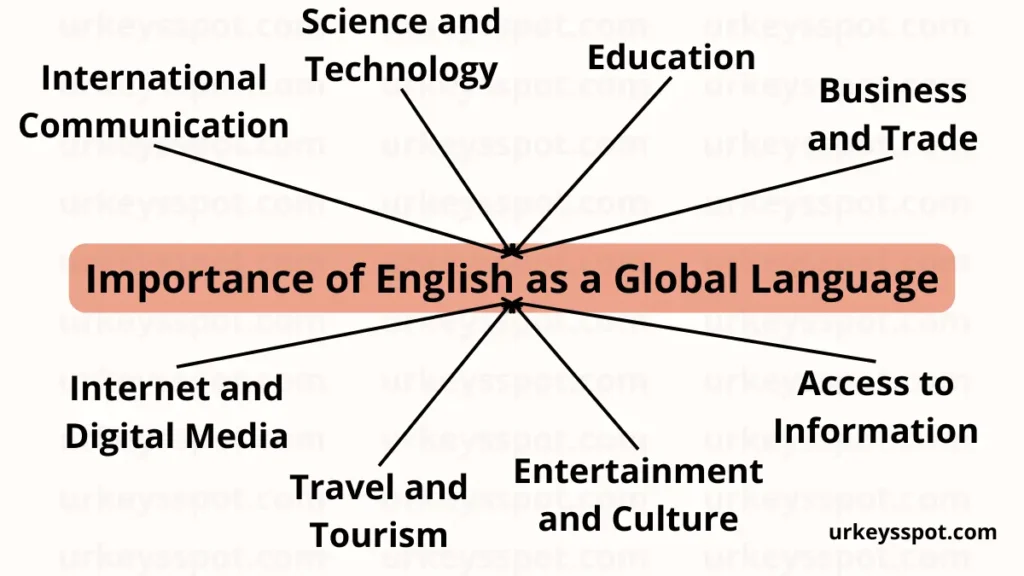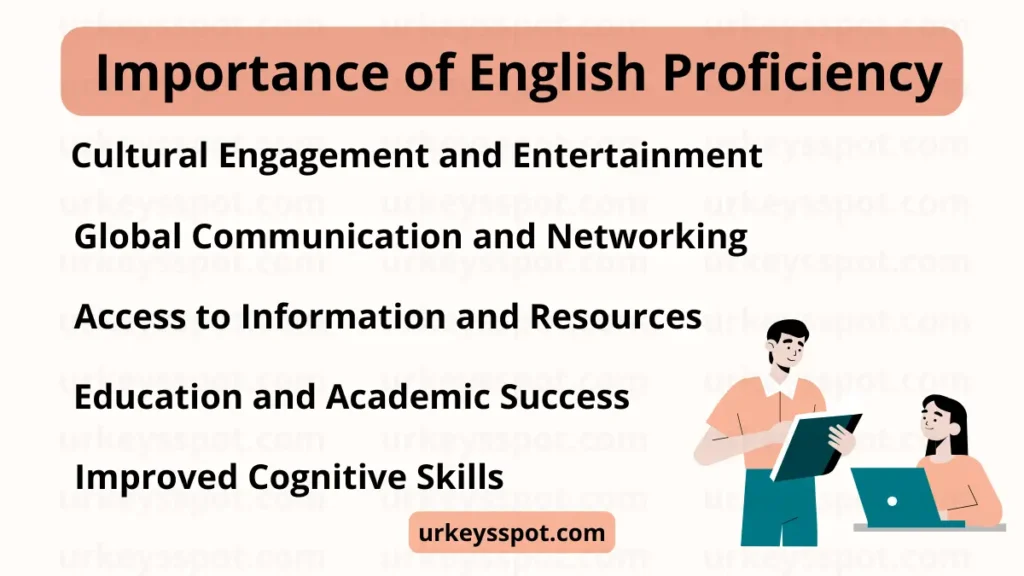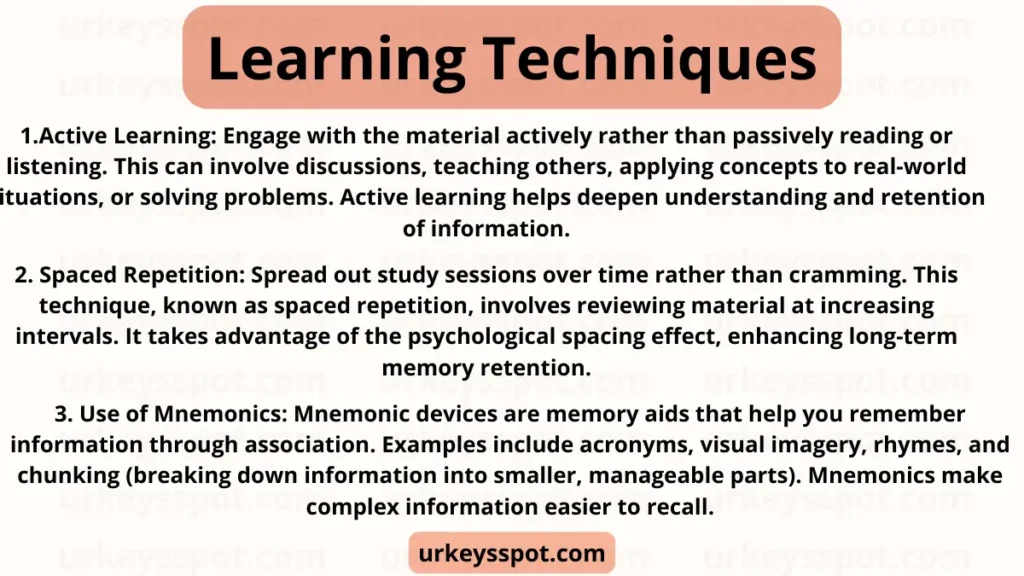Introduction
Learning to speak English as a second language can open many doors, both professionally and personally. It’s not just about mastering grammar and vocabulary; it’s also about understanding cultural nuances and communicating effectively. This article provides a comprehensive guide for ESL learners, covering the basics, challenges, effective strategies, essential resources, and the roles of teachers and language partners. Let’s dive in!
Introduction to Speaking English as a Second Language
Learning English as a second language is a journey that many embark on for various reasons, from academic pursuits to career advancement or even social integration. English, often considered the global lingua franca, holds significant importance in today’s interconnected world. But what makes this language so crucial, and what are the benefits and challenges associated with mastering it?
Importance of English as a Global Language

English is spoken by millions around the world, not just by native speakers but also by those who have adopted it as their second language. It’s the primary language of international business, science, technology, and aviation. Mastering English proficiency allows individuals to access a vast array of information and communicate effectively in various professional settings.
Benefits of Learning English
The benefits of learning English extend beyond practical communication. It enhances cognitive skills, broadens cultural understanding, and opens up opportunities for studying abroad or working in multinational companies. Moreover, it allows for deeper connections with people from different backgrounds, fostering a more inclusive global community.
Overview of Challenges Faced by ESL Learners
Despite its advantages, learning English comes with its set of challenges. Pronunciation can be tricky, especially with the plethora of accents and dialects. Grammar rules, while logical, can be complex, and vocabulary acquisition requires consistent effort. Additionally, understanding idiomatic expressions and cultural references adds another layer of difficulty. However, with the right strategies and resources, these challenges can be effectively managed.
In the next section, we will delve into the basics of understanding ESL, distinguishing it from EFL, and addressing common misconceptions.
Understanding the Basics
When diving into the realm of learning English as a Second Language (ESL), it’s essential to grasp the foundational concepts. These basics set the stage for a more effective and structured learning journey. So, what exactly is ESL, and how does it differ from English as a Foreign Language (EFL)? Let’s uncover these distinctions and debunk some common misconceptions along the way.
Understanding ESL
English as a Second Language (ESL) refers to the teaching and learning of English by non-native speakers in an environment where English is the dominant language. This scenario is common in countries like the United States, Canada, and the United Kingdom, where immigrants and international students learn English to integrate into society, pursue education, and enhance career opportunities.
Differences Between ESL and EFL
While ESL involves learning English in an English-speaking country, English as a Foreign Language (EFL) pertains to studying English in a non-English-speaking country. For instance, a student learning English in Japan is engaging in EFL. The main difference lies in the exposure to the language; ESL learners are immersed in an English-speaking environment, whereas EFL learners might have limited real-life interactions in English.
Common Misconceptions About ESL Learners
Several misconceptions about ESL learners persist, often hindering their progress. One common myth is that ESL learners are less intelligent or capable than native speakers. This couldn’t be further from the truth. Learning a new language is a complex cognitive process that often demonstrates a high level of intelligence and dedication.
Another misconception is that ESL learners will inevitably lose their accent and sound like native speakers. While some may achieve this, many retain their accents, which is entirely natural and doesn’t impede their ability to communicate effectively.
Importance of English Proficiency

English proficiency isn’t just a desirable skill; it’s often a necessity. For academic success, many universities require a certain level of English proficiency for admission. In the professional realm, fluency in English can open doors to international job markets, allowing individuals to work in diverse and competitive environments.
Academic and Career Opportunities
Mastering English can significantly enhance one’s academic and career prospects. Universities often require proof of English proficiency through standardized tests like TOEFL or IELTS. In the workplace, English fluency can lead to better job opportunities, promotions, and the ability to work in multinational companies.
Social and Cultural Integration
Beyond academic and career benefits, learning English facilitates social and cultural integration. It enables individuals to build relationships, understand cultural nuances, and participate more fully in community life. This aspect is particularly crucial for immigrants seeking to establish a new life in an English-speaking country.
Key Challenges in Learning English
Learning English as a second language presents numerous challenges. These hurdles can vary significantly depending on the learner’s native language, background, and the context in which they’re learning English. However, some common challenges are faced by many ESL learners.
Challenges Faced by ESL Learners
Pronunciation and Accent Issues
One of the most prominent challenges for ESL learners is pronunciation. English has many sounds that do not exist in other languages, making it difficult for learners to produce these sounds accurately. For example, the “th” sound in words like “think” and “this” can be particularly troublesome. Additionally, regional accents and dialects can further complicate pronunciation efforts. ESL learners often struggle with mastering these nuances, which can lead to misunderstandings and a lack of confidence in speaking.
Grammar Complexities
English grammar, with its numerous rules and exceptions, can be perplexing for ESL learners. Unlike some languages with more straightforward grammatical structures, English has various tenses, irregular verbs, and complex sentence constructions. For instance, the use of articles (“a,” “an,” “the”) and prepositions (“in,” “on,” “at”) often confuses learners. Moreover, English word order, especially in questions and negative sentences, differs from many other languages, adding another layer of difficulty.
Vocabulary Limitations
Building a robust vocabulary is crucial for effective communication, but it’s also a significant challenge. English is a language rich in synonyms, idioms, and phrasal verbs, which can overwhelm learners. Additionally, words often have multiple meanings depending on the context, such as “bark” (the sound a dog makes or the outer covering of a tree). Expanding one’s vocabulary requires consistent effort and exposure to varied contexts, which can be daunting for many learners.
Cultural Differences and Idiomatic Expressions
Understanding cultural nuances and idiomatic expressions is another major hurdle. Idioms like “kick the bucket” (to die) or “break a leg” (good luck) can confuse learners who interpret them literally. Cultural references, humor, and body language also play a significant role in communication and can be difficult to grasp without immersion in an English-speaking environment.
Overcoming These Challenges
Despite these challenges, various strategies and resources can help ESL learners improve their skills. In the next section, we will explore effective methods for learning English, from immersive techniques to utilizing technology and maintaining consistent practice. These approaches can significantly enhance the learning experience and lead to greater English proficiency.
Effective Strategies for Learning English as a Second Language
Overcoming the challenges of learning English as a Second Language (ESL) requires a strategic approach. By employing effective methods, learners can make significant progress and enhance their proficiency. Here are some proven strategies to help ESL learners on their journey.
Immersive Learning Techniques

One of the most effective ways to learn English is through immersion. This method involves surrounding yourself with the language in various contexts, which helps your brain absorb and process it naturally.
Benefits of Immersion
Immersion creates a rich language environment where learners can practice English in real-life situations. This constant exposure helps with vocabulary acquisition, improves listening skills, and enhances pronunciation. Moreover, it enables learners to understand cultural nuances and idiomatic expressions more intuitively.
Practical Immersion Methods
- Watching English Media: Regularly watching English movies, TV shows, and YouTube videos can significantly improve comprehension and pronunciation. Try to engage with different genres to broaden your vocabulary and understanding of various contexts.
- Listening to Podcasts and Audiobooks: These resources can be particularly helpful for practicing listening skills and learning the natural flow of spoken English. Some podcasts come with transcripts, which can aid in understanding and shadowing exercises.
- Participating in Conversations: Engage in conversations with native speakers whenever possible. Language exchange programs or online platforms like HelloTalk and Tandem can provide opportunities to practice speaking and get feedback.
Utilizing Technology and Online Resources
In today’s digital age, technology offers a plethora of tools and resources to aid language learning.
Online Courses and Apps
- Duolingo and Babbel: These apps provide structured lessons that cover various aspects of the language, including vocabulary, grammar, and pronunciation. They also offer interactive exercises and quizzes to reinforce learning.
- FluentU: This platform uses real-world videos, such as news, music videos, and inspiring talks, to create engaging language lessons. It helps learners see how English is used in different contexts and improves their listening and comprehension skills.
Interactive Platforms and Communities
Joining online communities, such as language forums and social media groups, can provide support and motivation. Platforms like Reddit’s r/EnglishLearning and Stack Exchange’s English Language Learners offer valuable advice and answers to specific language questions.
Practice and Consistency
Consistency is key when it comes to language learning. Regular practice helps reinforce what you’ve learned and builds confidence over time.
Importance of Regular Practice
Daily practice, even if it’s just for a few minutes, can make a significant difference in language acquisition. It keeps the language fresh in your mind and helps you gradually improve your skills.
Tips for Maintaining Consistency
- Set Specific Goals: Having clear, achievable goals can keep you motivated. For example, aim to learn five new words every day or complete a chapter of an online course each week.
- Incorporate English into Your Daily Routine: Try to use English in everyday activities, such as writing grocery lists, reading news articles, or chatting with friends.
- Keep a Language Journal: Document your progress, new words, phrases, and any difficulties you encounter. This practice can help you track your improvement and identify areas that need more focus.
Essential Resources for ESL Learners
Having access to the right resources can significantly enhance the learning experience for ESL students. From apps to books, these tools provide structured learning opportunities and help learners practice consistently.
Language Learning Apps and Websites
Modern technology has made language learning more accessible than ever. Several apps and websites offer comprehensive lessons, interactive exercises, and personalized learning experiences.
Top Language Learning Apps
- Duolingo: Duolingo is one of the most popular language learning apps. It offers bite-sized lessons that cover vocabulary, grammar, and pronunciation. Its gamified approach makes learning fun and engaging.
- Babbel: Babbel focuses on practical conversation skills, offering lessons designed by language experts. It covers real-life scenarios and provides interactive dialogues to practice speaking and listening skills.
- FluentU: This app uses real-world videos, such as music videos, movie trailers, and news clips, to teach English. It includes interactive captions and quizzes to reinforce learning and improve comprehension (British Council Learn English) (FluentU).
Interactive Platforms and Communities
- British Council’s LearnEnglish: This website offers a wealth of resources, including free online courses, interactive exercises, and practice activities for learners at all levels. It also provides tips on improving speaking, listening, reading, and writing skills (British Council Learn English).
- ESL Gold: ESL Gold provides a variety of resources, including vocabulary lists, grammar exercises, and conversation practice activities. It also offers links to other useful websites and tools for ESL learners (ESL Gold) (ESL Gold).
Books and Materials
Books and other learning materials are invaluable for reinforcing language skills and providing deeper insights into English grammar and usage.
Recommended Textbooks and Grammar Guides
- “English Grammar in Use” by Raymond Murphy: This comprehensive grammar guide is suitable for intermediate learners and provides clear explanations and exercises to practice grammar points.
- “Oxford Picture Dictionary”: This visual dictionary is an excellent resource for building vocabulary. It includes illustrations and contextual examples to help learners understand and remember new words.
- “Fluent English: Perfect Natural Speech, Sharpen Your Grammar, Master Idioms, Speak Fluently” by Barbara Raifsnider: This book focuses on advanced grammar, idioms, and natural speech patterns, making it ideal for learners aiming to achieve fluency.
Using Literature to Enhance Learning
Reading English literature can greatly improve language skills by exposing learners to rich vocabulary and varied sentence structures. Starting with simplified versions of classic novels or reading short stories can make the process enjoyable and less intimidating.
Role of Teachers and Language Partners
Effective guidance and practice are essential components of learning English as a Second Language (ESL). Teachers and language partners play a critical role in providing this guidance and creating opportunities for practice. They offer valuable feedback, help learners stay motivated, and ensure that learning is structured and goal-oriented.
Role of Teachers
Teachers are instrumental in guiding ESL learners through their language journey. They bring expertise, structure, and support that are crucial for mastering a new language.
Importance of Professional Guidance
Teachers provide structured lessons that cover all aspects of the language, including grammar, vocabulary, pronunciation, and cultural nuances. They use a variety of teaching methods to cater to different learning styles, ensuring that each student can grasp the material effectively.
- Personalized Feedback: One of the most significant benefits of having a teacher is receiving personalized feedback. Teachers can identify specific areas where a learner might be struggling and provide targeted exercises and advice to improve those areas (British Council Learn English) (ESL Gold).
- Motivation and Accountability: Regular classes with a teacher help keep learners motivated and accountable. This consistent interaction ensures that learners stay on track and continue to make progress.
Finding and Working with Language Partners
Language partners can complement the formal instruction provided by teachers. They offer practical opportunities to practice speaking and listening in a more informal setting.
Benefits of Language Partners
- Real-life Practice: Language partners provide a chance to practice English in real-life conversations, helping learners become more comfortable with everyday communication (FluentU) (rong-chang).
- Cultural Exchange: Engaging with language partners often involves cultural exchange, which enhances understanding of idiomatic expressions and cultural references.
- Peer Learning: Learning with a partner can be less intimidating and more enjoyable. It creates a supportive environment where both partners can learn from each other’s strengths and weaknesses.
Finding Language Partners
- Language Exchange Platforms: Online platforms like HelloTalk, Tandem, and ConversationExchange connect learners with native speakers for language exchange. These platforms offer various features, such as text, voice, and video chat, to facilitate communication.
- Local Language Meetups: Many cities have language meetup groups where learners can practice English with native speakers in person. Websites like Meetup.com can help you find such groups in your area.
Benefits of Language Exchange Programs
Participating in language exchange programs can be incredibly beneficial for ESL learners. These programs pair learners with native speakers, allowing for mutual language practice and cultural exchange.
Advantages
- Improved Fluency: Regular practice with a native speaker can significantly improve fluency and pronunciation.
- Cultural Insight: Understanding the cultural context behind certain expressions and idioms can enhance comprehension and make communication more natural (ESL Gold).
- Motivation: Engaging in language exchange can be highly motivating, as it provides a practical and enjoyable way to apply what you’ve learned.
FAQs
What is speaking English as a second language?
Speaking English as a Second Language (ESL) refers to the use and study of English by individuals whose first language is not English. It involves learning to speak, read, write, and understand English while often being immersed in an environment where English is the dominant language. This process helps learners to communicate effectively in various social, academic, and professional contexts (FluentU) (rong-chang).
How to speak English fluently as a second language?
Achieving fluency in English as a second language involves consistent practice and immersion. Here are some effective strategies:
- Engage in Conversations: Practice speaking with native speakers as much as possible. Platforms like HelloTalk and Tandem can help you find language partners.
- Use the Shadowing Technique: Listen to native speakers and try to imitate their speech, focusing on pronunciation and intonation.
- Consume English Media: Watch movies, TV shows, listen to podcasts, and read books in English to enhance your listening and comprehension skills (FluentU) (ESL Gold) (rong-chang).
How do you say English is your second language?
To express that English is your second language, you can say, “English is my second language,” or “I am an ESL learner.” Other phrases include, “I am learning English as a second language,” or “I speak English as a non-native speaker.” These expressions clearly communicate that English is not your first language but one you have learned or are learning (ESL Gold).
Why is it important to learn English as a second language?
Learning English as a second language is important for several reasons:
- Global Communication: English is widely spoken around the world, making it essential for international communication in business, science, technology, and tourism.
- Educational Opportunities: Many top universities and educational institutions use English as the medium of instruction, making proficiency in English crucial for accessing higher education.
- Career Advancement: Fluency in English can open up job opportunities in multinational companies and improve career prospects.
- Cultural Integration: Learning English helps individuals integrate into English-speaking communities, enhancing their social interactions and cultural understanding (British Council Learn English) (FluentU) (ESL Gold).
Conclusion
Learning English as a Second Language (ESL) is a transformative journey that goes beyond mastering vocabulary and grammar. It’s about opening doors to new opportunities, cultures, and experiences. This guide has provided you with insights into understanding ESL, the challenges faced by learners, effective strategies for improvement, essential resources, and the importance of teachers and language partners.
As you continue your ESL journey, remember that persistence and consistency are key. Immerse yourself in the language, make use of technology and online resources, and don’t hesitate to seek help from teachers and language partners. Each step you take brings you closer to fluency and confidence in speaking English.
Celebrate your progress, embrace the learning process, and stay motivated. The ability to communicate in English will enrich your personal and professional life, allowing you to connect with people from all over the world. Keep practicing, stay curious, and enjoy the adventure of learning English!

